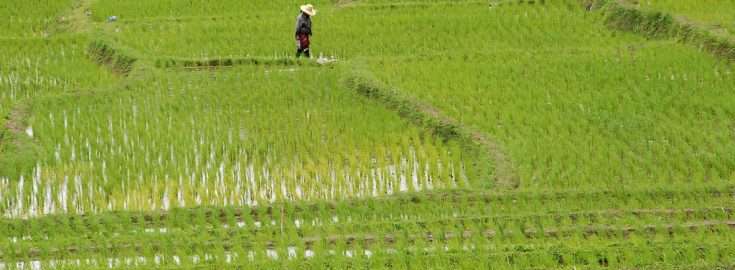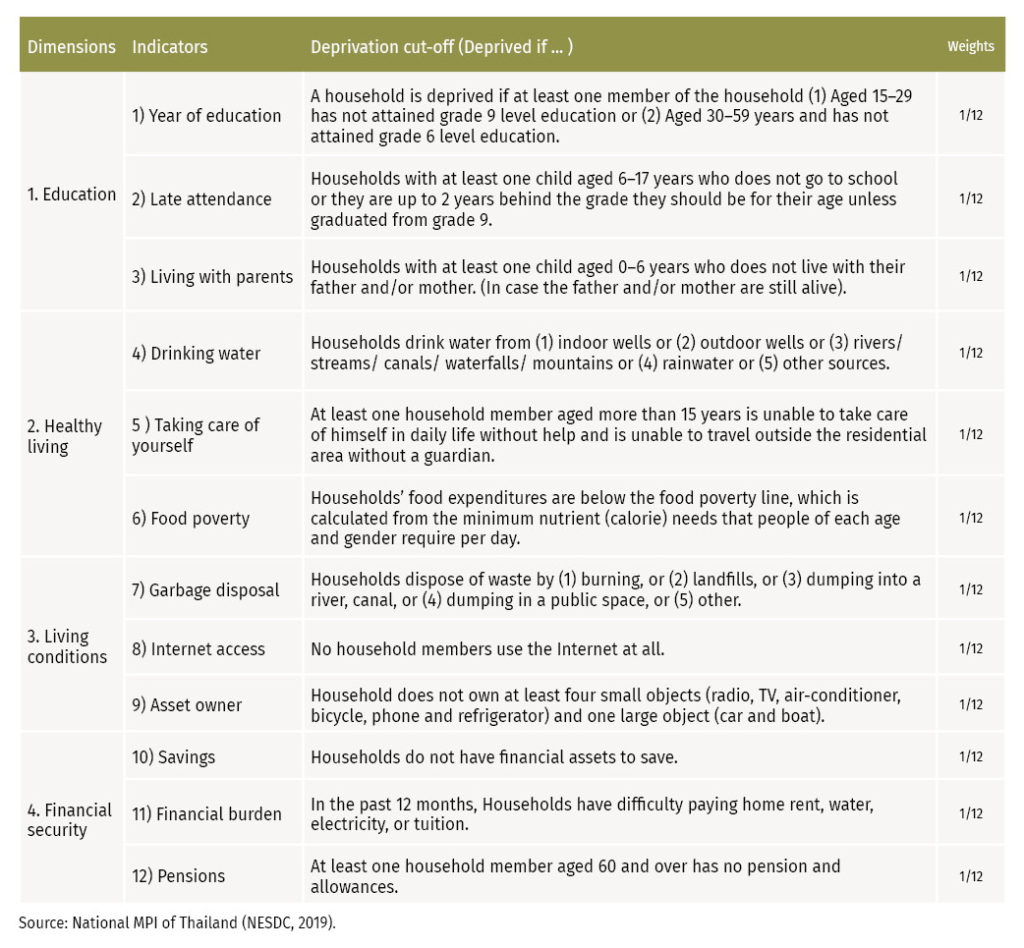
Search
Picture: Pierre Pouliquin
- Global MPI 2021 Country Briefing
- Joined MPPN: 2018
- National MPI
- Child Multidimensional Poverty Index
- Dimensions Articles
National MPI
In 2019, the Office of the National Economic and Social Development Council (NESDC) published the National Multidimensional Poverty Index (National MPI) as an additional official measure of overall poverty in Thailand.
The Thailand National MPI consists of four dimensions – namely education, healthy living, living conditions and financial security. Each dimension has equal weight. The poverty cut-off is 26%, which implies that a person is multidimensionally poor if he/she has deprivation equivalent to more than one dimension of the MPI.
In 2017, the Thailand MPI was 0.068 with the headcount ratio of 17.6% or 11.9 million people and the intensity of 38.7%. The MPI had decreased from 0.109 in 2013 and 0.078 in 2015. The dimension that contributed the most to the MPI was the living condition dimension, accounting for 37.2%. In terms of indicators, not having a pension (the universal elderly allowance not included) has the highest contribution at 14.7%, followed by lack of internet and lack of proper garbage disposal.
The household size and geography matter to the National MPI. Results show that the value of MPI, along with headcount ratio and intensity of poverty increased with household size in Thailand. In addition, the skip-generation families (where grandparents raise grandchildren) are likely to be MPI poor with a value of 0.132, almost double the national average. In terms of geography, those living in a non-municipal area have a higher MPI than those in municipal areas – both in the incidence and the intensity of poverty.
Similarly, there are also large differences across regions with the Northeast having the highest MPI at 0.102 followed by the South, North, Central and Bangkok at 0.094, 0.074, 0.045 and 0.012 respectively.
Child Multidimensional Poverty Index
On 11 September 2019, the National Economic and Social Development Council (NESDC) and UNICEF Thailand released the Child Multidimensional Poverty Index (Child MPI), a newly developed methodology to measure multiple deprivations faced by children beyond monetary poverty in Thailand.
The new study highlighted that about 22 per cent of children are living in multidimensional poverty with the highest deprivation in the areas of education and health. Multidimensional child poverty rates were found to be higher in rural areas and in particular, in the Northeast region.
Thailand has become one of the first countries in the world to develop a child focused MPI, which was developed under the partnership of NESDC and UNICEF with technical support from Oxford Poverty and Human Development Initiative (OPHI), Oxford University. The child MPI, based on using data from 2015-2016 Multiple Indicator Cluster Survey (MICS), takes a broader and more comprehensive concept of poverty than monetary poverty alone. The analysis reflects on four areas of deprivations that children face: education, child welfare, living standards and health.














